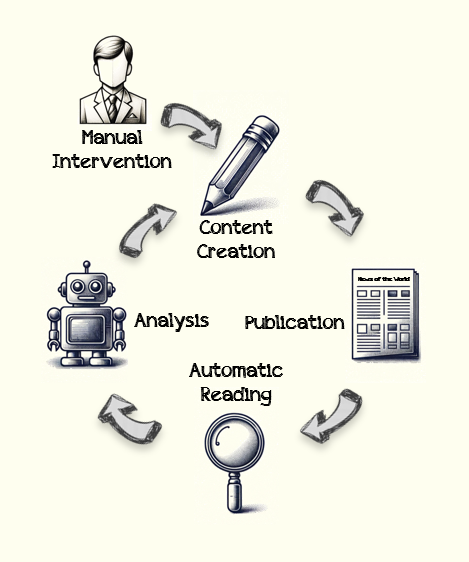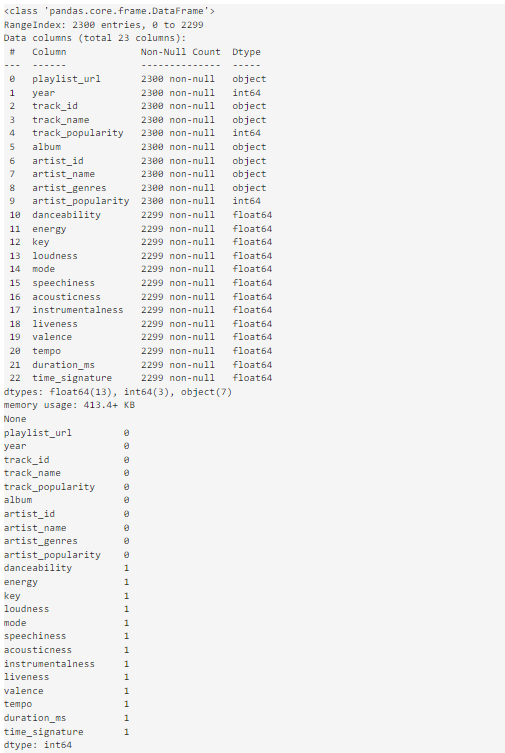
Embracing AI in Journalism — The News Carousel
Last Updated on November 5, 2023 by Editorial Team
Author(s): Tor Kielland
Originally published on Towards AI.
According to a recent survey by JournalismAI, a project of LSE’s Polis think-tank, 75% of the surveyed global news organizations are using AI in their workflow, from news gathering to production and distribution. While the primary motivation cited is enhancing efficiency to free journalists for more meaningful work, that explanation likely only scratches the surface. Companies like Axel Springer are cutting back their staff as more tasks are “performed by AI and/or automated processes”. As Mathias Döpfner, CEO of Axel Springer, astutely pointed out, tools such as ChatGPT could “make independent journalism better than it ever was — or replace it”. Given the rapid advancements in generative AI and the still-nascent market of software tools designed to harness it, it’s evident that the controversies we’ve seen thus far are merely speed bumps on the road to a new landscape profoundly influenced by AI.
In this series, I aim to shed light on the future of journalism in the age of AI. My views are informed by a decade of experience in media strategy and a similar period spent following neural network research and implementing machine learning projects for clients. I’ll offer my own predictions — these views are not representative of any larger consensus. I encourage the reader to critically evaluate whether my predictions make any sense.
Hop on the Carousel
The future of news isn’t just about robots writing stories. It’s about a cycle that will fundamentally change how we understand journalism. In this cycle, news articles will be written, published, automatically read, and then swiftly analyzed by the AI of other news outlets. The analysis then feeds back into the creation of new articles. This loop raises ethical and economic challenges, as news organizations draw from each other’s work more rapidly and efficiently than ever before. In essence, the journalistic landscape is becoming a News Carousel where everyone is free to take a little and give a little, all legitimized by the very editorial principles, which have served us so well for more than a century. This raises questions: How will this impact the way we monetize journalism? Particularly, what happens to the value of original reporting?

Content Creation
Original content creation is the lifeblood of the News Carousel. In theory, every piece of original content, essentially only have to be written once. While original content will increasingly be created by automatic processes, this is the domain where humans will still rule for a while. Let’s consider the stories that resonate with us the most: a piercing interview, a thoughtful editorial, or a compelling human interest story. These pieces require a natively existing human sense of ethics and a deep understanding of human emotion, something that, as of now, only humans possess.
Let’s jump a couple of years ahead and imagine that you’re a journalist who’s landed the interview of a lifetime. You prepare meticulously, crafting questions designed to delve deep into your subject’s mindset. During the interview, you don’t just follow your script, you adapt, pivot, and engage in a real conversation. Helped by AI, you write out the piece into a narrative, rich in insight, beautifully formulated.
The age-old belief that writing and content are inseparable is outdated, and you have accepted it. State-of-the-art LLMs (large language models), readily available through APIs, have commoditized the craft of writing. The real currencies now are content (facts, ideas or viewpoints) and trustworthiness.
Publication
Upon completion, your article is ready for publication. With a click, the product of research and dedication is accessible to readers worldwide. This could be the pivotal moment your career has been waiting for, the piece that sets you apart. But as we shall see, this is merely the start of your article’s journey, and the recognition for its quality and impact may be more collective than individual.
Automatic Reading
The term “scraping” often carries a negative connotation, hinting at data being snatched without permission. Some entities like Google choose softer terms such as “indexing”. This reframing emphasizes the cataloging of data, downplaying the act of acquisition for your own purpose. Whether it’s open or behind a paywall, content can be scraped. Legal regulations around this practice remain patchy. However, the general consensus is clear: as long as the data’s use aligns with accepted purposes, there’s no legal barrier to automated reading. Historically, cost was a significant barrier. Yet, with technological advancements and market saturation, these costs have been drastically reduced. Today, the expense of acquiring a million full-text stories per month from around the world is less than the salary of a single journalist.
Analysis
Who could possibly benefit from a million articles, you ask? This is where LLMs, along with their derivative embedding models, again come into play. These technologies make it feasible to sift through mountains of content and identify precisely the nuggets of information that cater to a specific readership. We used to think of a story as the smallest piece of knowledge that would be indexed from the web. Not anymore. In this new landscape, individual statements within a story become the atomic units of information. Each statement carries a tiny value of newsworthiness within its specific context and can be catalogued and linked to related statements. While some of these statements may reiterate what is already known to most readers, thus bearing low value, others are fresh and insightful, offering high value. Consider, for example, your compelling interview, filled with hard-hitting questions and thought-provoking answers. Within 3 minutes of its publication, LLMs worldwide will dissect every statement made, sorting them by relevance and newsworthiness for various target audiences. In this environment, every bit of new information becomes a valuable asset, ready to be integrated into the ever-spinning News Carousel.
Within minutes of your article’s debut, a new piece surfaces. This new story takes a small slice, say 10%, from your original work and melds it with information from other sources. Its focus is different, targeted at a new audience, perhaps even in another language or country. Within an hour, your interview contributes to 20 more stories, and then the cycle repeats. Your original work evolves into a strand in an ever expanding, global tapestry of stories, taking on new shapes and influencing audiences in ways you never imagined.
The Dual Edges of Progress
How will your newspaper justify the week of research you poured into your journalistic masterpiece? Wouldn’t it be more economical for your outlet to simply analyze what others have written? Picture this grim future: newsrooms devoid of reporters, filled only with the hum of computers ceaselessly searching for fresh content to replicate. Original journalism, the kind that demands deep research and critical thinking, becomes a rarity, its economic incentives vanished. Meanwhile, the ‘news’ that circulate may not be genuine news at all. Instead, it consists of crafted narratives, strategically planted by those who know how to manipulate the system, be it corporations, governments, or special interest groups.
As AI begins to influence journalism, it’s tempting to envision a grim landscape. In the early years, LLMs may falter in preserving the nuanced meaning of human statements and reproduce them with less precision than humans would do. However, there are silver linings. As AI technology evolves, it will empower news organizations to trace every statement back to its original source, allowing ethical outlets to more easily distinguish fact from rumor and halt the spread of misinformation in its tracks. While some outlets will continue to employ questionable tactics, such as distortion, sensationalism, or using unreliable sources, my expectation is that AI-backed fact-checking entities will increasingly hold them accountable.
In the meantime, until the technology reaches this maturity level, I believe we will see two main categories of outlets: On one hand, outlets that use AI to churn out content without meaningful human oversight. On the other hand, organizations that integrate AI into a human-led process, where both journalists and editors put their names — and therefore their reputations — on the line for the accuracy and ethical integrity of the content.
Embracing AI?
So, why call this series “Embracing AI in Journalism” if it reads like a cautionary tale, you might ask? Because there is not much point in warning anyone against the future. Whether it’s Google’s upcoming Genesis project or something similar, the technology of “source-guided storytelling” is just around the corner, and it will change the news landscape. The News Carousel, thus, is going to spin faster than it did before, driven by AI understanding human text, and it will accelerate. Since we can’t stop it, our focus must be on how to adapt. So let’s explore some ideas:
Adjust Editorial Principles
It may be time to adjust traditional editorial principles. For example, the notion that simply adding analysis and commentary elevates a story doesn’t hold water in a landscape where content can be repurposed within minutes. Instead, editorial guidelines should tilt the scales back in favor of protecting original content. Plagiarism protections need to be stronger and clearer in a world where lines between content creation and aggregation are blurring. This doesn’t mean curtailing freedom but broadening responsibility. Editorial guidelines should serve as a bulwark, protecting not just the reader and story subjects, but also the creator, ensuring that original reporting remains valuable and valued. I think this would help ensuring that editorial principles and copyright principles both remain robust and complementary in the future.
New Business Models
To sustain quality journalism and avoid confining original content behind unindexed paywalls, we might consider exploring collaborative revenue-sharing mechanisms. For example, news labs that analyze and disseminate content could participate in this by crediting original creators both in citation and financially. Creating an international framework for such financial transactions could perhaps be one avenue for maintaining the value of original journalism in the AI era. However, achieving this would be a complex endeavor that would likely require the leadership of major news institutions.
Avoid Centralization
The concentration of AI power is a grave concern. My second biggest fear is that only a few companies, like Google, OpenAI, and Anthropic, will dominate the field. My biggest fear is that these AI suppliers will not just focus on creating the best possible models, they will also use their immense power to take control over industry verticals heavily influenced by AI. Regrettably, one of these companies is already taking such steps: Google. And they are not just targeting healthcare, driving, search and office products. They are now also targeting an industry that holds incredible societal power and therefore stands as a cornerstone of democracy: the news sector. This isn’t just innovation. It’s a consolidation of control, and it’s a red flag.
So what can we do? Governments should intervene, but that’s easier said than done. As for media organizations, the answer is straightforward: You should resist the allure of one-stop solutions and seek to collaborate with multiple AI providers. By avoiding dependency on a single entity, you keep a robust ecosystem that safeguards the pluralism of ideas and perspectives, which is the foundation of democratic discourse.
Work for Transparency
We must strive for transparency towards the public, both from newsrooms and AI providers. It is the only principle that will allow us to maintain trust over time. To ensure this, we have two primary tools. The first one is the byline. It’s a badge of ethics and accountability, helping us distinguish between the two types of news outlets, those that take personal responsibility and those that don’t. Secondly, I also believe AI labeling standards will be helpful in the short run for fostering transparency. These labels will indicate the extent to which an article has been AI-generated or assisted. While the lack of standards here is the headache of chief editors as of right now, and while this transparency will be critical to the public perception of news outlets in the short run, I personally believe that these labels will become irrelevant after a few years. Why? Because every article will have a small or large piece of AI in it. (They already do, as every journalist uses Google for sourcing and therefore may have a potentially biased perspective.) And so, pretty soon, no one is going to write “This article was written purely by me”. Ultimately, I believe the only stamp of quality that will matter is the name of the author. For instance: “This story is written by Tor Kielland with AI assistance. I stand by it.”
Conclusion
Journalism is entering an important transition period, one filled with both promise and challenges. The News Carousel will turn, ever faster, powered by AI that understands human text and accelerates its analysis and dissemination. How we adapt to this change, as journalists, editors and AI suppliers, will determine the shape of journalism. There is no escaping this change, only the opportunity to steer its course. Therefore, my advice is not to shy away from AI, but to embrace it cautiously. Collaborate in adapting editorial principles and in exploring new business models. Resist the allure of AI centralization. Champion transparency at every step. These are not simple tasks, and while I believe they offer a possible way forward, the key is that we, in the news business, continue the discourse on how we best honor our societal responsibility in this fast changing landscape.

About the author: Tor Kielland is the CEO and co-founder of Open Mind, a company specializing in AI-driven solutions for responsible news writing.
Join thousands of data leaders on the AI newsletter. Join over 80,000 subscribers and keep up to date with the latest developments in AI. From research to projects and ideas. If you are building an AI startup, an AI-related product, or a service, we invite you to consider becoming a sponsor.
Published via Towards AI

 Logo:
Logo:  Areas Served:
Areas Served: 







